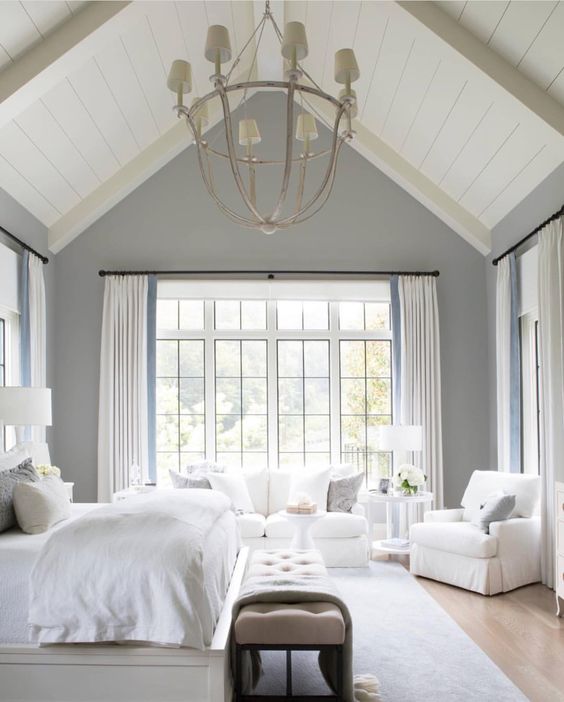
6 Steps To Go From Bedroom to Sleep Sanctuary
Share
We have talked before about good sleep habits and one of the first steps to creating a new and improved sleep routine is of course having the perfect environment to make new habits in. Whether we are aware of it or not the bedroom is the room in the house where we spend most of our time so it is important to get every aspect as perfect as we can for a relaxing and comfortable nights sleep.
1. The Duvet
We all know the difference a good duvet can make so if you're not allergic we recommend a down or feather duvet as they help regulate body temperature unlike synthetic duvets. The perfect duvet will keep you just the right temperature - opt for a 13.5-15 tog duvet for the winter months and, for summer months, you’re best going for a 4.5 tog duvet.
2. Temperature
According to The Sleep Council hot, cold and draughty rooms can seriously impact on your sleep. Your body heat peaks in the evening and then drops to its lowest levels when you’re asleep, so a cool 16-18°C (60-65°F) is thought to be an ideal temperature in a bedroom. Temperatures over 24°C (71°F) are likely to cause restlessness, while a cold room of about 12°C (53°F) will make it difficult to drop off.
3. Feng Shui
Shui designer and wellness coach Alexandra Lees advises that “Untidiness in your bedroom will stagnate the energy of your space and leave you feeling drained and restless - For a good night’s sleep, you must simplify, streamline and neatly organise the contents of your room. Declutter visible areas, such as dressing tables, then tidy hidden spaces, such as behind your bedroom door and inside wardrobes, as unseen mess here will still affect you. The most important area to keep clear is under your bed because of its proximity to you when you sleep.” Alexandra also suggests that you consider your bed’s location: “Position your bed with a wall behind you or add a solid headboard to create strong energy. To support relaxation, move your bed near a window for natural ventilation, but ensure that you‘re not affected by unwanted cold drafts or outside noise.”
4. Lighting
Subtle low lighting in your bedroom will help let your body know that the day is over and it's time to switch off. Restrict blue light from phones, TV or electronic devices before bed and look at introducing a dimmer switch on the main light. Lamps and fairylights can also create an important relaxing subtle glow to your room.
5. Smell
An important sense when it comes to preparing the body to unwind and end the day. Whether you choose to use candles, aromatherapy oils, a diffuser or a mist the right smell is key to slowing the body down. Research has shown that essential oils and aroma can provide relief for disrupted sleep and help improve the quality of sleep. Some of the most common scents and aromatherapy oils known for aiding sleep include lavender, vanilla, rose, geranium, jasmine, sandalwood and citrus.
6. Decor
The final step is perhaps the hardest to get right but ultimately effects the whole aesthetic and ambience of your sleep haven. Choosing the right colour for walls, soft furnishings and fabrics will do masses to create a relaxed mood as soon as you step through the door. When it comes to colours that promote peace and tranquility the colours to use are white, blue, green, grey and violet. Think of these colours as you plan any bedroom interior design project and choose pieces of furniture that give you a sense of calm, soothe emotions and that you will want to be surrounded by as you rest in the quiet of your new sleep sanctuary!
